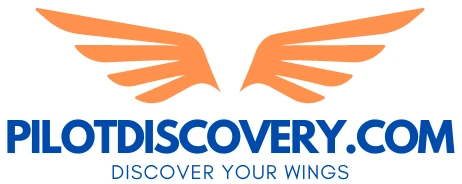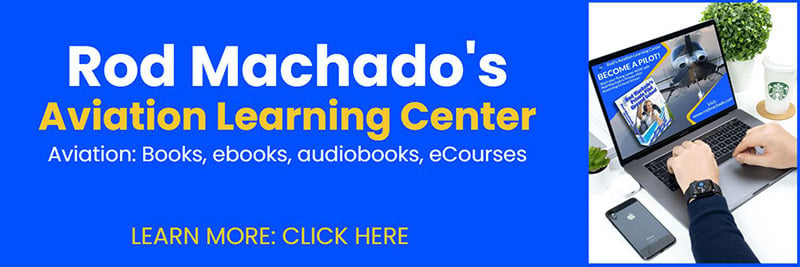Original publication date: August 9, 2021
Last Updated: 1 year
Author: Max Skyler
Topic: Airplanes
Number of Comments: 0
| Certification Type | Private Pilot License |
| Minimum Required Hours Of Instruction | 40 |
| Hours of Solo | 10 |
| Hours of Cross Country | 3 |
| Hours of Night Flight | 3 (10 takeoffs & landings) |
| Hours of Instrument Time | 3 |
| Total Hours Cumulative | 40 |
| Medical Certificate | 3rd Class |
| Written Exam | Yes |
| Oral Exam | Yes |
| Checkride | Yes |
| Minimum Cost | These are typical costs, assuming 40 hours of instruction only. Actual costs could exceed these. $50 per hour of instruction x 30 $150 aircraft rental x 40 = $6000 per aircraft rental + $1500 instructor time + $150 medical exam + $150 written test + $300 checkride + $150 ground school = $8,250 Minimum |
During your private pilot training, you will have spent the majority of your time flying in only one type of aircraft. This would typically be a single-engine, four-seater trainer, of either the high-wing or the low-wing variety. Once you get your pilot license, however, you may eventually yearn for expanding your horizons and flying bigger, faster, and more capable aircraft.
As a general rule, the day you get your private pilot license (PPL), you will be limited to piloting aircraft that have a single-engine, non-retractable landing gear, unpressurized cabins, a max capacity of 4 people, and a maximum gross takeoff weight of fewer than 12,500 pounds. Private pilots can fly heavier and more complex aircraft upon completion of additional training.
| Maximum Passenger Capacity | 4 |
| Number of Engines | 1 engine |
| Engine type | Propeller-driven piston-engine |
| Maximum Takeoff Weight | 12,500 pounds |
| Landing Gear | Non-retractable |
| Maximum Legal Altitude | Below 18,000 feet above mean sea level (MSL) |
From the get-go, newly minted private pilots can expect to be able to fly any single-engine, basic four-seater high-wing or low-wing trainer aircraft. You are not restricted to flying only the specific make and model or type of aircraft you completed your pilot training and passed your check ride in. Let’s explore the different types of aircraft that carriers of a private pilot license can fly, and what it takes to be able to fly them. If you have not yet begun your pilot training, you may be wondering: Is it hard to become a pilot?
The One Aircraft You Must Fly With A New Private Pilot License
You just passed your check ride, and now you are ready to put your brand new private pilot license to use. What aircraft can you fly on day one? Simply put, the most obvious answer would be that you can fly the same aircraft model that you trained and got your license in!
I would strongly recommend that you stick to that aircraft for the honeymoon phase of your new private pilot status. Put in as many hours as you can in the original aircraft you got your license in so that you can develop a solid level of proficiency and competency as a pilot.
Making The Transition To Similar Aircraft As A Private Pilot
Having said that, if you are looking to add some variety to your aircraft repertoire, and to gain some experience in other aircraft apart from your original trainer, then the best place to start, in my opinion, would be with branching out to other single-engine basic trainer aircraft made by the same manufacturer.
For example, if you trained in a Piper Warrior, you may want to gain some flight time with a Piper Arrow, Piper Archer, or Piper Cherokee. Or, if you trained in a Cessna 172, you may want to try your hand with a Cessna 182.
This will allow you to transition to other aircraft with a minimal learning curve and possibly little to no need for an instructor to accompany you on your maiden voyage.
Transitioning To Other Aircraft Models With Just Your Private Pilot License
The next step in your progression toward newer aircraft could then be a parallel move, to one of the other well-known training aircraft models. For example, if you are used to flying low-wing Piper aircraft, you could then transition to Cessna Skylane high-wings or vice versa. (If you are on the fence about whether you should fly high-wing or low-wing aircraft, this resource may help guide you in making a decision.)
Pipers and Cessnas are fundamentally identical in terms of basic operation and flight characteristics. Yet each of them has its own distinct nuances that set them apart enough that would warrant having an instructor accompany you for the first couple of flights, to help you get acclimated.
The visual cues that you are used to, when it comes to performing clearing turns, scanning the sky for traffic, and using the horizon or the wings as a reference for pitch and bank maneuvers may inevitably vary somewhat between a high-wing and a low-wing aircraft.
Then there’s the Diamond DA40 trainer aircraft. Although it, too, is fundamentally similar to Pipers and Cessnas, there is one glaring difference that can require some adjustment and some getting used to: Unlike the Piper and Cessna which both have yokes that resemble a steering wheel for two-handed grip, the Diamond DA40 has a stick, which is intended for one-handed operation. (Or, if you trained in a Diamond DA40, it can take some getting used to, transitioning from a stick to a yoke!)
You will definitely want to spend a couple of lessons with an instructor when making the transition between any of these three different types of aircraft. If you spent most of your flight training in one kind of aircraft, then a couple of hours of instruction is all it typically should take, to help you bridge the gap to the other. (Your mileage may vary, depending on your experience level and competency, among other factors.)
Aircraft You Can Fly With Additional Endorsements & Ratings
At some point, once you’ve done a few cross-country trips and taken your family or your friends flying, you may come to appreciate the limitations of flying simple single-engine trainer aircraft. Trainer aircraft are clearly not designed for speed, range, and passenger capacity.
So what do you do when you feel the itch to take your flying to the next level?
If you feel that you are ready to graduate to the next level of flying and that you are ready to start exploring more diverse, versatile, and complex types of aircraft, but you just don’t have the time, the budget, or the interest in pursuing a commercial rating, then there is some good news for you:
There are a diverse number of different types of aircraft you can learn to fly with just your private pilot’s license. Let’s take a look at your options and see how far your private pilot’s license can take you:
Glass Cockpits
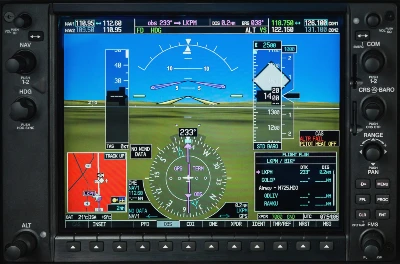
If you are trained on the traditional “six-pack” analog cockpit instrument panel, then making the transition to modern, glass cockpits can be a welcome challenge to “up your game” as a pilot. You do not need to pass a written test, oral test, or checkride to fly one of these. You just need adequate training and a written endorsement from an instructor.
Tailwheel aircraft (“Taildraggers”)
Taking off and landing in a tailwheel aircraft is a little different than the traditional tricycle model. Getting a tailwheel endorsement can actually improve your proficiency in terms of aircraft control with respect to flaring during landings, understanding the impact of the center of gravity on an aircraft, and the ability to do short-field or soft-field takeoffs and landings. With a few hours of training and an endorsement from an instructor, you will be able to fly single-engine taildraggers such as the Cessna 170, the Piper J-3 Cub, or the Piper PA18 Super Cub.
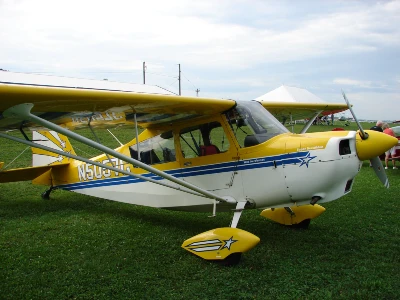
Seaplanes
If you have ever wanted to be able to take off and land an aircraft from a body of water, this endorsement is for you! While there is no minimum required number of hours of training in a seaplane, the FAA does require you to pass an oral exam and a checkride with a Designated Pilot Examiner (DPE). Under the FAA’s aircraft category and class rating system, single-engine seaplanes are considered a separate class of planes than single-engine land. Earning your seaplane rating also counts as a substitute for your biennial flight review (BFR).
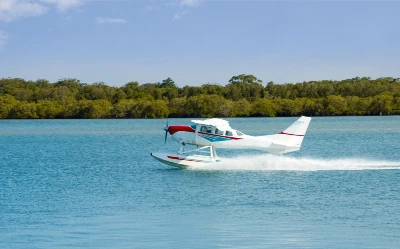
Gliders
Although gliders are a different category of aircraft than powered airplanes, if you already have your private pilot’s license, the glider rating can be earned as an “add-on” with a minimum of 3 hours of glider time, a minimum of 10 glider flights, and an FAA mandated oral exam and practical checkride with a DPE. Like the seaplane rating, the glider rating also counts as a substitute for your BFR.
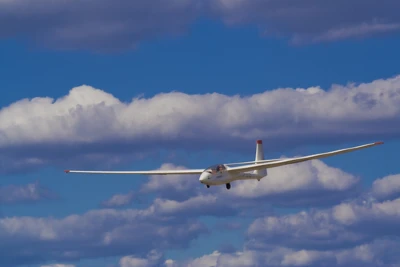
Complex aircraft
As the name implies, this endorsement qualifies you to fly more “complex” aircraft. By definition, complex aircraft include those which possess one or both of the following:
- Retractable landing gear
- Constant speed / variable pitch propeller
All that is needed for the complex endorsement is some training with an instructor, followed by a written endorsement. No checkride is required for the complex endorsement.
Multiengine aircraft
The multi-engine rating is a staple add-on to any private pilot’s license. As pilots, at some point we all may aspire to be able to get to our destination faster or to be able to carry more passengers and cargo, beyond the limitations of a basic trainer. A multi-engine rating can very well be your golden ticket to break that barrier.
While there is no minimum number of hours of training required, you could expect to spend about 10 to 15 hours, before receiving an endorsement from your instructor. An oral exam and practical checkride are required, with a DPE. Also noteworthy is the fact that in addition to the Multi-Engine Land rating, there is also a Multi-Engine Sea rating as well. (These are, in fact, distinct ratings.)
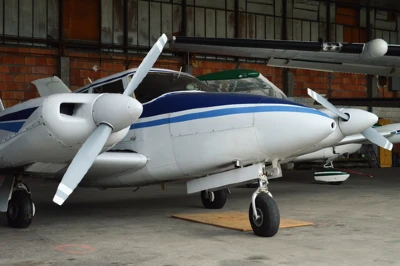
| Aircraft Category / Class / Type | Training / Experience / FAA Requirements | |
| Glass cockpits | + No minimum flight hours requirement. +5 or more hours may be typical, depending on experience & complexity of intended usage. + Some ground training may be required. + Some FBOs or insurance companies may require a minimum hours for proficiency before endorsement. + Instructor’s written endorsement. + PPL not required as a prerequisite. You can train directly on a glass cockpit as part of your initial PPL training, in which case minimum hours, written test, oral exam, and checkride will apply. + Instrument or Commercial rating not required. But your ability to fully utilize all the features of a glass cockpit will be limited to VFR non-commercial operations only. | |
| Tailwheel | + No minimum flight hours requirement. + 5 to 10 hours is typical. + Some ground training may be required. + Some FBOs or insurance companies may require a minimum hours for proficiency before endorsement. + Instructor’s written endorsement. + PPL not required as a prerequisite. You can train directly in a tailwheel aircraft as part of your initial PPL training, in which case minimum hours, written test, oral exam, and checkride will apply. + Instrument or Commercial rating not required. But your ability to fly tailwheel aircraft will be limited to VFR non-commercial operations only. | |
| Seaplanes | + No minimum flight hours requirement. + 5 to 10 hours is typical. + Some ground training may be required. + Some FBOs or insurance companies may require a minimum hours for proficiency before endorsement. + FAA Checkride with DPE (Oral + Practical.) + No written test required. + PPL not required as a prerequisite. You can train directly in a seaplane as part of your initial PPL training, in which case minimum hours, written test, oral exam, and checkride will apply. + You would then separately need additional training and an endorsement in order to fly single-engine or multi-engine land planes. + Instrument or Commercial rating not required. But your ability to fly seaplanes will be limited to VFR non-commercial operations only. | |
| Gliders | + 3 hours minimum flight time in a glider. + 10 minimum solo flights in a glider. + Some ground training may be required. + FAA Checkride with DPE (Oral + Practical.) + No written test required. + PPL not required as a prerequisite. You can train directly in a glider as part of your initial PPL training, in which case minimum hours, written test, oral exam, and checkride will apply. + You would then separately need additional training and an endorsement in order to fly single-engine airplanes. + Instrument or Commercial rating not required. But your ability to fly will be limited to VFR non-commercial operations only. | |
| Complex | + No minimum flight hours requirement. + 2 to 5 hours is typical, depending on the complexity of aircraft. + Some ground training may be required. + Instructor’s written endorsement. + Not necessarily. You can train directly in a complex aircraft as part of your initial Private Pilot License (PPL) training, in which case minimum hours, written test, oral exam, and checkride will apply. + Instrument or Commercial rating not required. But your ability to fly complex aircraft will be limited to VFR non-commercial operations only. | |
| Multiengine | + No minimum flight hours requirement. + Some ground training may be required. +10 to 15 hours is typical. + FAA Checkride with DPE (Oral + Practical.) + No written test required. + PPL not necessarily required as a prerequisite. You could train directly for multi-engine, but it is not recommended. + Instrument or Commercial rating not required. But your ability to fully utilize your multi-engine rating to its fullest potential will be limited to VFR non-commercial operations. |
Limitations on Aircraft You Can Fly With Your Private Pilot License
Instrument Rating
When you first get your basic private pilot license, you are restricted to flying clear of any clouds. You must be able to maintain visual reference to the ground (or if you are flying above a cloud layer, there needs to be a break in the clouds large enough that allows you to descend to the ground without your field of vision outside the cockpit window being completely obscured by clouds).
You are also restricted to flying below 18,000 MSL.
To be able to fly through clouds or above 18,000 MSL, you must obtain an instrument rating, which requires a minimum of 40 hours of dual instruction in real or simulated instrument flight.
An instrument rating can then be coupled with other ratings and endorsements, such as the high altitude endorsement, or the multi-engine rating, listed above. Doing so will afford you the ability to fly at higher altitudes or in all kinds of weather conditions.
High Altitude Endorsement
Once you get your pilot’s license, the highest you are legally allowed to fly is up to, but not including, 18,000 feet above sea level.
At the same time, the basic trainer aircraft that you learn to fly when you first get your private pilot license will typically have a service ceiling of anywhere between 10,000 feet to 14,000 feet above mean sea level (MSL).
Furthermore, pilots are required to use some form of supplemental oxygen when flying above 12,500 MSL for greater than 30 minutes.
So, as a practical matter, you will rarely, if ever, fly above 12,500 MSL in a basic trainer single-engine aircraft, as a private pilot.
The high altitude endorsement is required in order for pilots to fly aircraft at or above 25,000MSL. But then again, flying above 18,000 MSL is not legally permissible without first obtaining an instrument rating, as mentioned above.
Turboprops and Turbojets
Turboprop and turbojet aircraft are typically used in commercial aircraft operations. However, there is nothing legally to stop a private pilot from flying one of these for non-commercial purposes, as long as they obtain an instrument rating, high-altitude endorsement, complex endorsement, and a multi-engine rating. In other words, it will require a significant investment of time, studying, and money, in order to achieve the necessary ratings and endorsements to be able to legally fly turboprops and turbojets. But it is definitely doable.
Aircraft Limitations
The FAA restricts private pilots from operating aircraft that have a maximum gross takeoff weight of greater than 12,500 pounds.
If the aircraft you are flying typically requires a cruising altitude of 25,000 MSL or higher, then you would not be able to fly it without a high altitude endorsement. You would not be able to obtain a high-altitude endorsement without an instrument rating.
If the aircraft you intend to fly legally requires there to be two or more pilots in the cockpit, then it is most likely being flown for commercial purposes and therefore would require a commercial pilot’s license.
The table below summarizes the various experience requirements to be able to fly the different types of aircraft we have described in this resource guide.
| To be able to fly… | You will need… |
| above 25,000 MSL | a high-altitude endorsement |
| in clouds | an instrument rating |
| an aircraft that weighs more than 12,500 pounds | a commercial license |
| an airplane that can take off and land on a body of water | a seaplane rating |
Interested in more information on what are the easiest and safest airplanes for pilots to fly?
